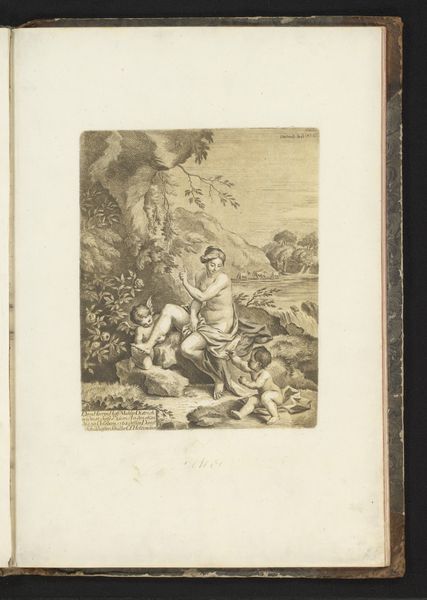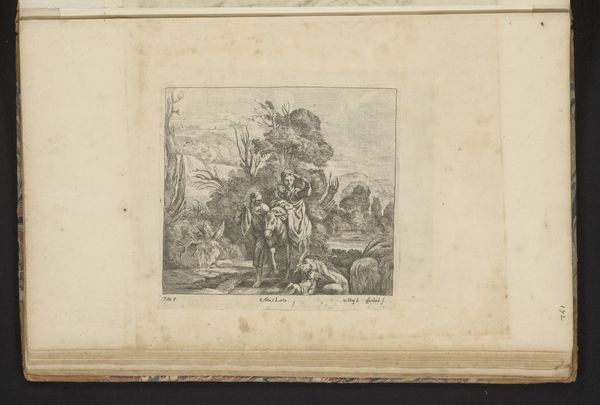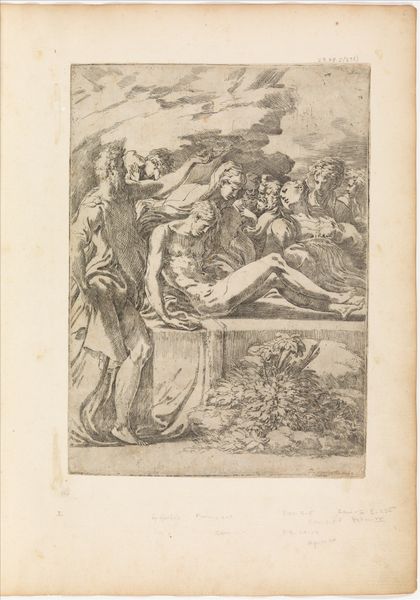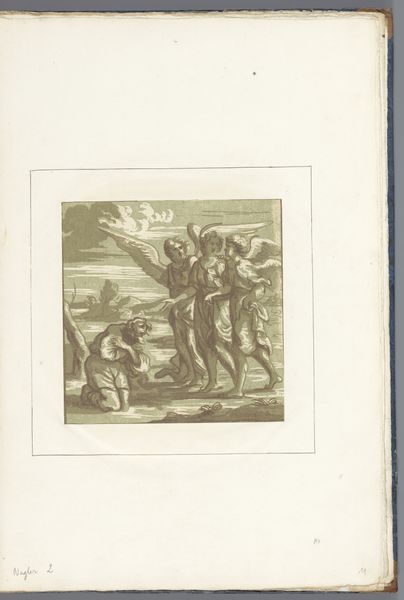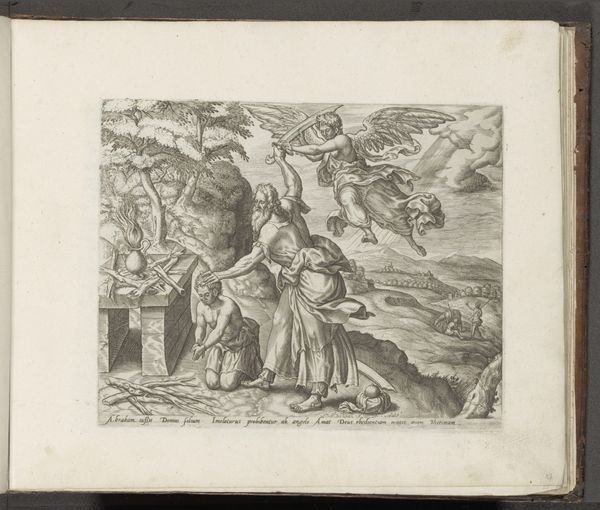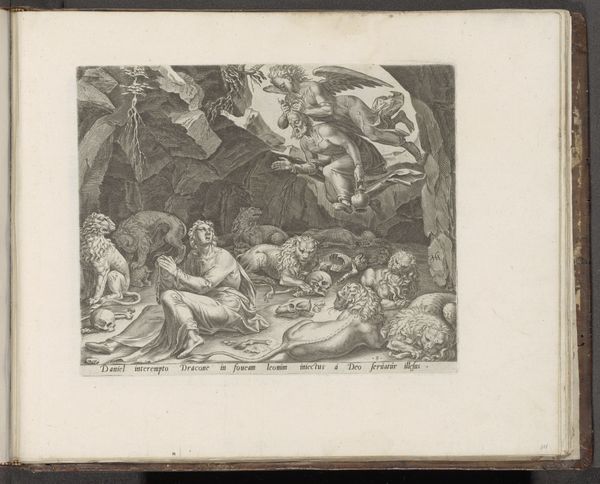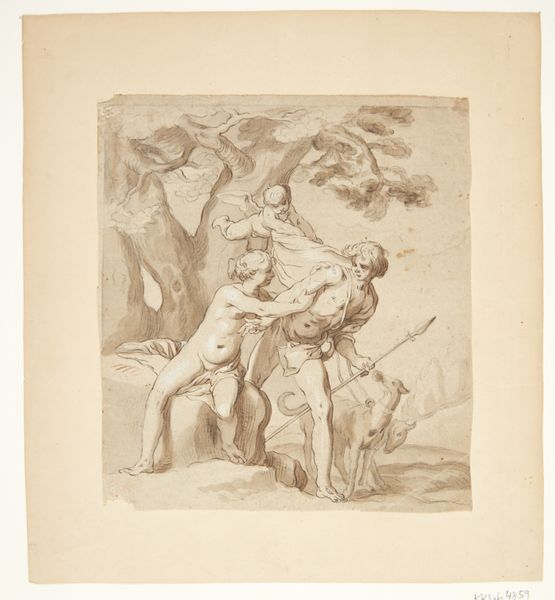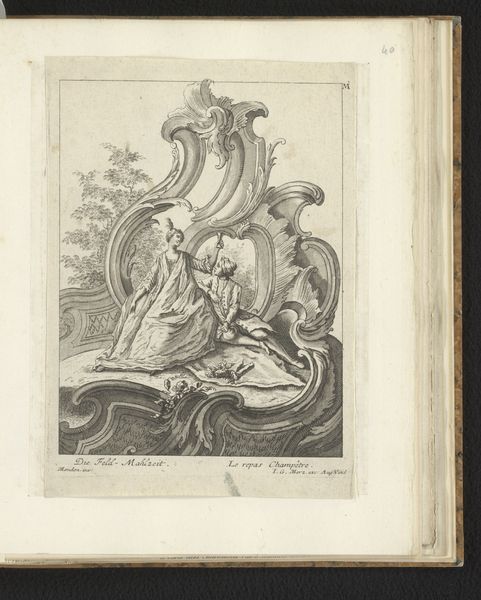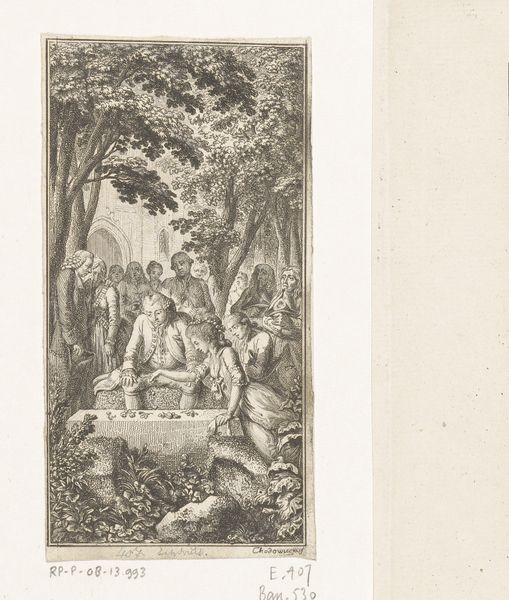
drawing, coloured-pencil, paper, ink
#
drawing
#
coloured-pencil
#
narrative-art
#
landscape
#
figuration
#
paper
#
ink
#
coloured pencil
#
romanticism
Dimensions: height 226 mm, width 171 mm
Copyright: Rijks Museum: Open Domain
Curator: Standing before us is "Verloren Zoon als varkenshoeder," or "The Prodigal Son as Swineherd," a drawing by John B. Skippe, created in 1809 using coloured pencil and ink on paper. It's a remarkable example of early 19th-century narrative art. Editor: Immediately, I'm struck by its almost melancholic air. The somber tones and the way the figure is positioned, hunched over… there’s a palpable sense of despair. Curator: Skippe has indeed captured a poignant moment. He depicts the biblical parable where the prodigal son, having squandered his inheritance, finds himself reduced to tending pigs, the lowliest of occupations in that era. The landscape itself reflects his inner state. Editor: Absolutely, the surrounding landscape isn’t just a backdrop. It becomes a mirror of the character's internal turmoil, that deep isolation following reckless abandon. Were there many artists taking on this narrative? Curator: The Prodigal Son story was a recurring theme in art and literature, often employed to reflect societal anxieties about morality, wealth, and redemption. Artists were drawn to its dramatic potential and its capacity to resonate with diverse audiences across social classes. We should keep in mind the position of art in public life at this point in history. Editor: Seeing this portrayal, you almost sense a critique of unchecked privilege and the devastating consequences when societal structures fail to catch those who fall. What kind of institutions was Skippe involved in that lead him to produce imagery like this? Curator: John Skippe had a fascinating journey in life as he lived through periods of enormous upheaval in social structures that certainly impacted his work. Looking at this particular piece it is compelling in that it provides us with the reminder that those experiencing food insecurity, regardless of background or misdoing, are still worthy of compassion. Editor: It leaves you contemplating cycles of privilege and dispossession that endure today, who suffers most when societal structures collapse? Very powerful food for thought. Curator: Indeed, and the drawing technique adds another layer of intimacy; there’s a fragility to it that amplifies the scene’s emotional intensity, reminding us of how the political can be rendered through such personal and sensitive details. Editor: Precisely. Art, in this context, doesn’t simply reflect the moment; it probes the depths of human experience within systems. Thank you. Curator: My pleasure. It is such an intriguing window into the moral and social landscape of its time.
Comments
No comments
Be the first to comment and join the conversation on the ultimate creative platform.
